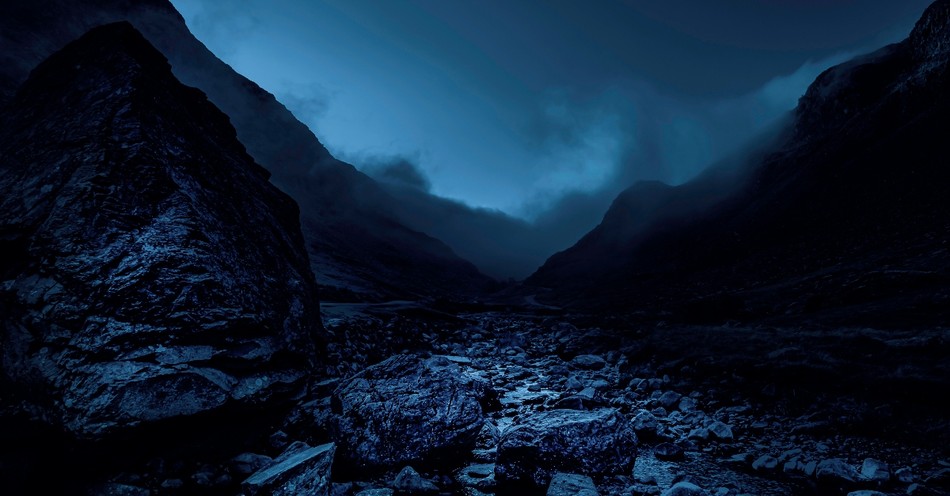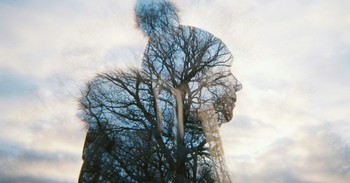I must confess that my first exposure to this phrase was not from the Bible but from Coolio’s Gangsta’s Paradise, a popular rap song from the early 90s. For Coolio, the line is “as I walk through the valley of the shadow of death, I take a look at my life and realize there’s nothin’ left.” Psalm 23:4 is painted in a much more hopeful hue:
Even though I walk through the valley of the shadow of death, I will fear no evil, for you are with me; your rod and your staff, they comfort me.
But what is the “valley of the shadow of death” that devastated Coolio but left the Psalmist with hope? And what does it mean to walk in this valley?
What Is the Valley of the Shadow of Death?
In my time as a pastor, I’ve preached a fair share of funerals. Some families like certain scriptures read, especially if certain passages were important to them.
A majority of the time, Psalm 23 is one of the passages I’m asked to read. It has become iconic within our culture. If someone is dying or has died, you read Psalm 23 as a comfort. But is this actually talking about death?
The Hebrew word translated as “shadow of death” is one word, salmawet. It is a word that most often appears poetically. And the best translation is probably to call it “the valley of the deepest darkness.”
It’s not entirely inappropriate to see it as a figure of death or the dark underworld, but it’s also not entirely accurate. In Psalm 23, the image of a shepherd leading the sheep through a dark ravine is probably a closer image than being led through the pangs of death.
But it could be argued that there is no “darker ravine” than death itself. Derek Kidner argues that “although darkness is the leading thought in most of the Old Testament contexts, death is dominant in a few, including (in my view) the present verse” (Psalms 1-72: An Introduction and Commentary).
The Septuagint (LXX), which is the Greek translation of the Old Testament, agrees with Kidner as it translates the phrase as skias thanatou (the shadow of death).
I would say that this verse can apply to death. And perhaps death, or the prospect of death, was on the forefront of David’s mind. Note as well that the phrase is the valley of salmawet.
This tells us that it is not just the darkest place, but it is the darkest place within that darkness. It may be helpful then to consider the whole phrase as the “darkest of darkness.”
Though the language is a bit dated, the words of John Owen are helpful here:
“As death is the worst of evils, and comprehensive of them all, so the shadow of death is the most dismal and dark representation of those evils to the soul, and the valley of that shadow the most dreadful bottom and depth of that representation” (Quoted from W.S. Plumer, Psalms).
That is what the valley of the shadow of death is, but what does it mean to walk through this valley?
What Does it Mean to Walk in This Valley?
Once when I was a teenager, I went out with a friend into the woods. We ended up further into the woods than we thought and as night began to fall, we realized that we were going to be in a thick wood when darkness came upon us.
We did not have flashlights or cellphones; all we had was a pale moonlight to navigate our way out of the woods and back to safety. It was terrifying, but we had a moon.
I am also originally from Hannibal, Missouri, and have had several guided tours through Mark Twain Cave. There is one point where they turn off all the lights, and it is pitch black in the cave.
You cannot even see your hand in front of your face. If the darkness had been this thick as we walked through the woods, it would have been incredibly dangerous.
Psalm 23:4 pictures a similar scene of walking in the darkest of darkness but doing so without fear of evil. Why? Because “your rod and your staff, they comfort me.”
We can walk through any darkness if the Lord is our shepherd. What this Psalm tells us is that there is no place so dark where God is not present with you. There is no depth of darkness where he does not traverse.
We are able to walk through this valley because we are being led by a gentle shepherd. That is the only way we can survive the dark moments in our life. And think about how the shepherd would guide his sheep in such a time.
He would not point off into the distance and tell the sheep to traverse there alone, nor would he go far ahead of them and call them to himself. No, in such a perilous situation a good shepherd will keep his sheep very close.
They will be within reach of his rod and staff. He will be close enough to protect from enemies and close enough to reassure of his presence. This is how Jesus is present with us in our darkest moments.
How Does Psalm 88 Relate?
Perhaps it would be helpful to illustrate this with Psalm 88. Psalm 88 is perhaps the darkest Psalm in all of Scripture. To walk through Psalm 88 is to trek amongst the darkest of the dark.
Other Psalms end with hope. Psalm 88 does not. It’s low. It’s depressing. It is a picture of what happens when all the curses of Deuteronomy fall upon someone. It seems hopeless.
On one occasion, as I was battling a deep depression, I came upon Psalm 88. It was somewhat healing because it seemed as if those Psalmist’s words were my words. But the camaraderie didn’t last long because I felt as the Psalmist did that darkness was my only friend. I claimed it as my own Psalm.
But then, Jesus broke through the darkness. I began to remember the gospel and realized that Psalm 88 was not ultimately my psalm. It belonged to Jesus, the suffering servant. If anyone could pray Psalm 88, it was Jesus.
He had plummeted to the darkest depths. He was in the deepest valley. He met the full weight of death and hell. If anyone has walked through “the valley of the shadow of death” or fallen into the deep pit of Psalm 88, it is the Lord Jesus.
This gave me great hope because it meant that there was no darkness that could befall me where Jesus was not already present. He had been there. And he was there still, with me, in the midst of that darkness.
He is the Great Shepherd who is able to guide us through the darkest valley because he is all too familiar with the terrain. The Man of Sorrows can lead his sheep through this darkness because it is here, in these dark places, where he so often is found residing.
But we know the gospel story as well. Jesus does not stay in that pit. Darkness never gets the last word. He leads us through the valley.
And whether that is at our darkest moment of death or in those moments we would call the pangs of death — we know that Christ has been there and has already defeated the darkness in our place. He goes lower than we will ever go so that He can get underneath us and carry us into glory.
The Suffering Servant is the Great Shepherd.
For further reading:
How Does the Lord Restore Our Souls?
What Does the Imagery of ‘My Cup Runneth Over’ Mean in Psalm 23:5?
Why Does the Bible Ask, ‘Death Where Is Your Victory’?
Photo Credit: ©iStock/Getty Images Plus/JazzLove
Mike Leake is husband to Nikki and father to Isaiah and Hannah. He is also the lead pastor at Calvary of Neosho, MO. Mike is the author of Torn to Heal and Jesus Is All You Need. His writing home is https://mikeleake.net and you can connect with him on Twitter @mikeleake. Mike has a new writing project at Proverbs4Today.




